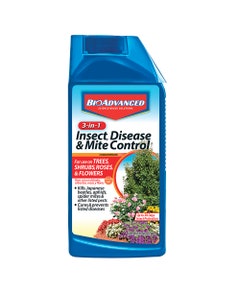.jpg)
.jpg)
- Home
- Solution Center
- Learn
- Rose & Flower
- Growing Our Favorite Fragrance Flowers
Growing Our Favorite Fragrance Flowers
Plant a feast for the senses by adding fragrant flowers to your yard. Many are easy to start from seed and won't take a big bite out of your garden budget. Perfumed bloomers bring more than a pretty face to your landscape. You can also clip a few stems of some varieties and flood your indoor spaces with botanical aromas, too. If you're planting for bouquets, do a little research to make sure the flowers you choose are suited for cutting.Ready to grow a scent-sational garden? Get started with a few of these fragrant favorites.

Sweet Pea (Lathyrus odoratus)
This richly fragrant annual bloomer blends scents of orange blossom and honey. A few stems can perfume a room. Most varieties climb by tendrils; provide a mesh-type support. For containers or borders, look for shorter varieties. Make sure seed packets state that plants are fragrant; some modern introductions aren't.
Sweet Peas prefer cool soil. Sow seed directly outdoors in all but the warmest regions. Where soil doesn't freeze, sow outdoors in fall or early in the year for spring flowers. For the prettiest bouquets, plant a mix of dark and light colors.

Sweet Alyssum (Lobularia maritima)
Honey-scented flowers blanket this low-growing annual that sprouts easily from seed. Look for blossoms in white, purple, lavender and rose. Use Sweet Alyssum to edge beds, surround spring bulbs or grace container gardens. This bloomer is a butterfly favorite and also draws beneficial insects.
Sow seed directly outdoors in early spring. Where soil doesn't freeze, sow seed outdoors in fall for a winter-spring crop. Sweet Alyssum is widely available in cell packs and transplants easily. In cool-summer areas, it can flower from spring until fall frost. Shear plants back by half after flowering to promote future blooms. Some varieties self-sow.

Four-O'Clock (Mirabilis jalapa)
Want to see hummingbirds, butterflies and night moths? Tuck a few Four-O'Clock seeds into soil this spring. These 2-inch, trumpet-flared flowers open about 4:00 p.m. daily, releasing orange blossom perfume. The scent is heady from dusk into the evening. This plant forms a bushy mound, 2-3 feet tall and wide.
Sow seed directly outdoors in spring after all danger of frost is past. Plants self-sow readily in warmer zones; remove spent blooms to keep spread in check. USDA Zones 9-11.

Moonflower (Ipomoea alba)
This is the Morning Glory vine's night owl cousin. Moonflower blooms unfurl at dusk, staging a slow-motion show that's almost as fun to see as the one that follows as night-pollinating moths sip nectar from flowers. The white blooms ooze an intoxicating fragrance. Site this vine near an outdoor seating area to savor the show and scent.
Start seeds indoors in peat pots 2-3 weeks before last frost, or sow seed directly outdoors when night temperatures are reliably above 50ºF. Moonflower is a heat lover (USDA Zones 10-11); don't plant too early in cold regions. For a striking show, plant a trellis with both Morning Glory and Moonflower.

Flowering Tobacco (Nicotiana species)
These star-shaped flowers have a jasmine perfume that's released late afternoon through evening. Look for different types of Flowering Tobacco with varying heights and blossom color. Nicotiana alata (USDA Zones 10-11), N. Sylvestris (USDA Zones 10-11), and N. Langsdorffii (annual) are reliably fragrant. Double-check all other seed packets or labels to confirm you're purchasing scented plants.
Flowering tobacco is versatile in the garden. Give it sun or light shade; it withstands heat, humidity and light frosts once established. If you're growing from seeds, sow seed directly outdoors after all danger of frost is past. In mild-winter zones, plants may overwinter. In other regions, some nicotiana self-sow.
More Fragrant Flowers
Adding fragrant flowers to your garden is a choice you won't regret. For more perfumed beauty, consider these plants: Heliotrope, Angel's Trumpet (brugmansia), Flowering Stock (Matthiola), Wallflower (Erysimum/Cheiranthus), Sweet Rocket (Hesperis), Sweet William (Dianthus) and Datura (Datura metel or D. Meteloides).















